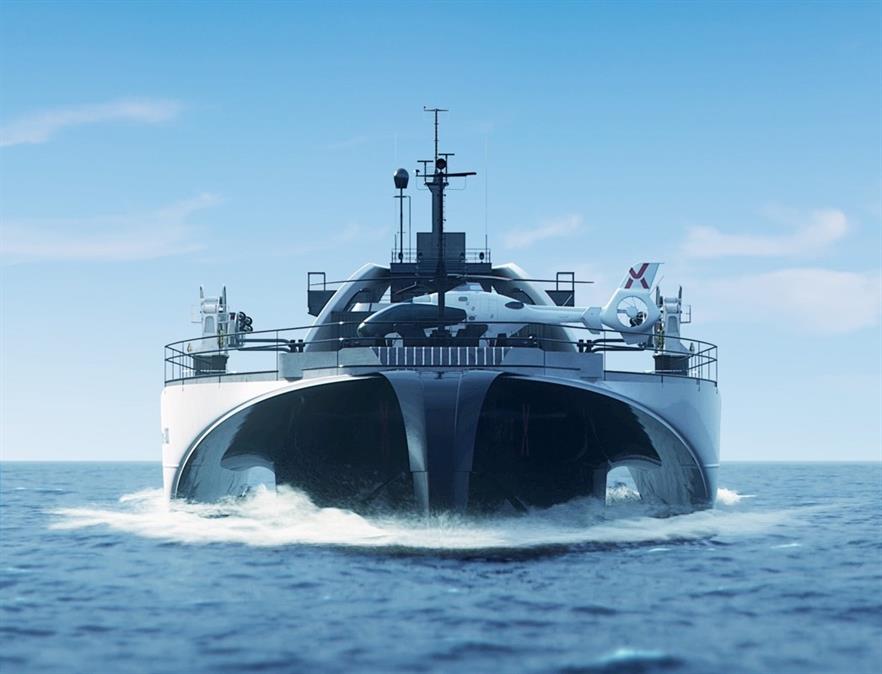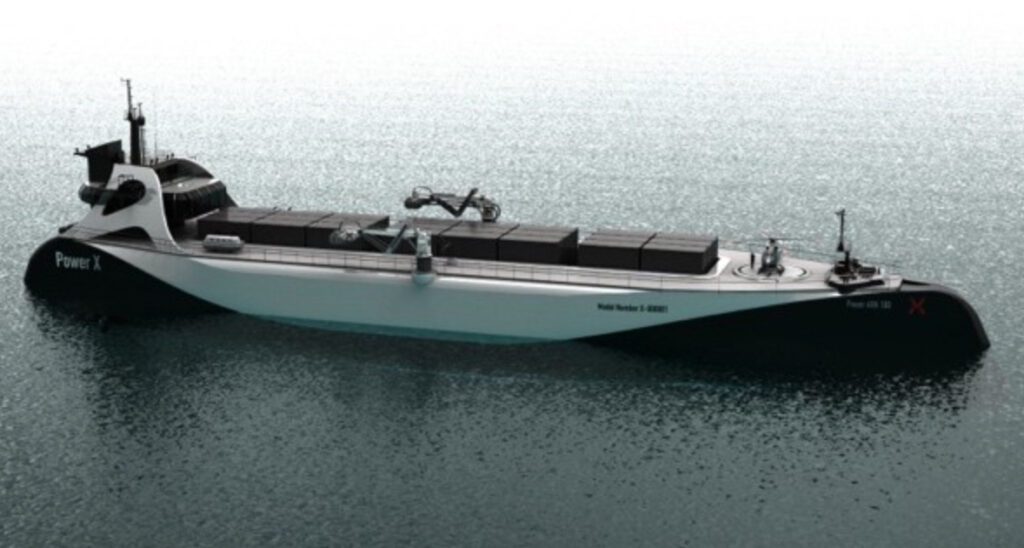Japanese Firm Unveils Ship Dedicated to Storing and Transmitting Offshore Wind Power
The post Japanese Firm Unveils Ship Dedicated to Storing and Transmitting Offshore Wind Power appeared first on POWER Magazine.

A Japanese firm has set out to shake up energy storage and transmission with a freshly launched power transfer vessel" concept that is designed to carry electricity from offshore wind farms to shore. The company's first electric ship model, which will have an energy storage capacity of 200 MWh, is slated for completion in 2025.
PowerX, a Tokyo-based company recently founded by entrepreneurs Masahiro Ito and Dr. Tadahisa Kagimoto, on Aug. 18 announced it will design and build an automated power transfer vessel with a massive battery payload that is integrated with the ship's controls to transport offshore wind power to shore."
Tackling Infrastructure Concerns Related to Deepwater or Remote Offshore WindThe concept seeks to resolve concerns about the infrastructure needed to build out Japan's offshore wind sector, Ito, who is PowerX's CEO, said during a press conference. Japan, an island nation, currently depends on imported fossil fuel for 86% of its energy needs, he noted. However, the country wants to generate 36-38% of its power from renewables by 2030. This will require ramping up its offshore wind capacity from the current 20 MW to 10 GW within the next decade. Right now, only [270 MW] are produced using offshore wind today, and there's an opportunity to expand that to 45 GW by 2040," said Ito.
However, Japan is surrounded by deep coastal waters, which limit the potential range for setting up offshore wind farms," he said. Envisioning a change in how the world consumes and transfers renewable energy," PowerX's solution can lift the restriction on power generation location, which will allow a greater flexibility for offshore wind farm locations, especially for an island country like Japan," he said.
I envision that in the future, large ships will no longer carry the fuel to burn to make electricity, but to carry electricity itself," said Ito. These are massive ships packed full of batteries that are carrying renewable energy from the source to where they're needed most. The ships can really replace power lines in many cases, undersea cables in many cases, and be a far more sustainable way of transferring power across the globe."
Traditional undersea cabling requires embedding cables in the ocean floor, which is expensive, potentially environmentally detrimental, and limiting, because you're tethering yourself to one location," said Ito. However, with our ships, you could build a huge offshore farm 100 km offshore and then just have a bunch of ships go back and forward to transfer its power," he said. Other benefits he highlighted are that the power transfer vessel concept could open up new opportunities for offshore wind farms to be built farther out offshore. The farther from shore you get, the annual wind speed is higher," he said. Yet another benefit is [the wind farms] won't get in anyone's way."
Catering to Japanese ConditionsIto said that while the PowerX concept will initially cater to Japan, given its geographical challenges, it could have global applications. One specific area he highlighted for potential application in Japan is to supplement the grids between the wind-rich but remote Hokkaido region in the north, Tohuku in the northeast, and the Tokyo area on the east-central coast, where Japan's power demand is highest.
We think we can use our ships and really consolidate the power generated in Hokkaido, bring it to a single port, and then charge up these massive ships. Those ships then can travel 800 to 900 km down to where there is a grid dock and then discharge there," he said.
So imagine maybe 8 to 12 very large ships coming down from Hokkaido every single day. This is a regular occurrence when you're talking about regular shipping. They just dock at the port, discharge power, and they go back. This allows for the transfer of power without cutting down forestry, rebuilding, and buying up land, and taking decades to do that." The ships could also provide resilience services to areas stricken by earthquakes, tsunamis, or other disasters, he said.
The First Model: A 200-MWh TrimaranPowerX intends to roll out a series of power transfer vessel models, starting with the Power ARK series. Its first model, Power ARK 100, is essentially a custom-built 100TEU trimaran that is slated for completion in 2025. Ito said the ship, which will likely be the smallest in its fleet, will serve as a proof of concept.
Power ARK 100 will carry 100 [3,000-kWh] grid batteries, hence 200 MWh of power," the company said. The vessel can travel up to 300 [kilometers (km)] when running only on electricity and will be able to unlock long-distance, intercontinental clean power transmission when it is powered by both electricity and sustainable biodiesel fuels."
 Japanese firm PowerX plans to complete the first model of its power transfer vessel" fleet, the Power ARK 100, by 2025. Power ARK 100, a 2,200-ton electric trimaran, will be around 100 meters (m) long, 21.9 m wide, and a draft of 5 m. Courtesy: PowerX
Japanese firm PowerX plans to complete the first model of its power transfer vessel" fleet, the Power ARK 100, by 2025. Power ARK 100, a 2,200-ton electric trimaran, will be around 100 meters (m) long, 21.9 m wide, and a draft of 5 m. Courtesy: PowerXThe ship, notably, is designed for Japanese coastal waters, which are characterized by a wavelength of 6.5 seconds and an amplitude of 4.5 meters. So it's fairly rough seas," Ito said. The batteries will be housed in containers of around 50 to 60 tons-which is much heavier than a regular container ship, he said. However, we envision this as a system. For example, take a Neopanamax container ship with 24,000 containers. If you replace 3,000 of them with batteries and have the proper system and the software and the infrastructure with the boat, you can actually transfer not only cargo, but also electricity-like a gigawatt of power as well."
Because the design will be scalable, PowerX anticipates future models will carry more battery capacity. As envisioned, the Power Ark 1000 model will have a storage capacity of 2,090 MWh, and the Power Ark 3000 model will have a 5,660 MWh storage capacity.
For now, PowerX's focus is to get the Power ARK 100 to actually work and transfer power," said Ito. We will do this test and prove that the total energy efficiency is going to be just enough to deploy this at scale." If the proof of concept is workable, and there's demand for it," PowerX will then deliver a larger ship around 2030.
In-house Battery ManufacturingWhile the power transfer vessels will be PowerX's revenue driver," the company has also set out to build its own battery factory. It anticipates construction will begin in 2022 and mass production could begin by 2024. We're going to buy the cells but we will have an automated battery packaging plant for Japan." Plans, for now, envision a 1-GWh capacity. By 2028, however, PowerX wants to grow that capacity to 5 GWh per year for grid batteries, fast electric-vehicle charging batteries, ship batteries, and house batteries.
However, PowerX's current manufacturing priority is obviously the marine battery like we need to build our power transfer ship, so a 3,000 kWh very large marine battery that is container friendly so you can pop them on a boat, stack them, connect them to the ship's operating system, and be very safe," Ito said.
-Sonal Patelis a POWER senior associate editor (@sonalcpatel,@POWERmagazine).
The post Japanese Firm Unveils Ship Dedicated to Storing and Transmitting Offshore Wind Power appeared first on POWER Magazine.